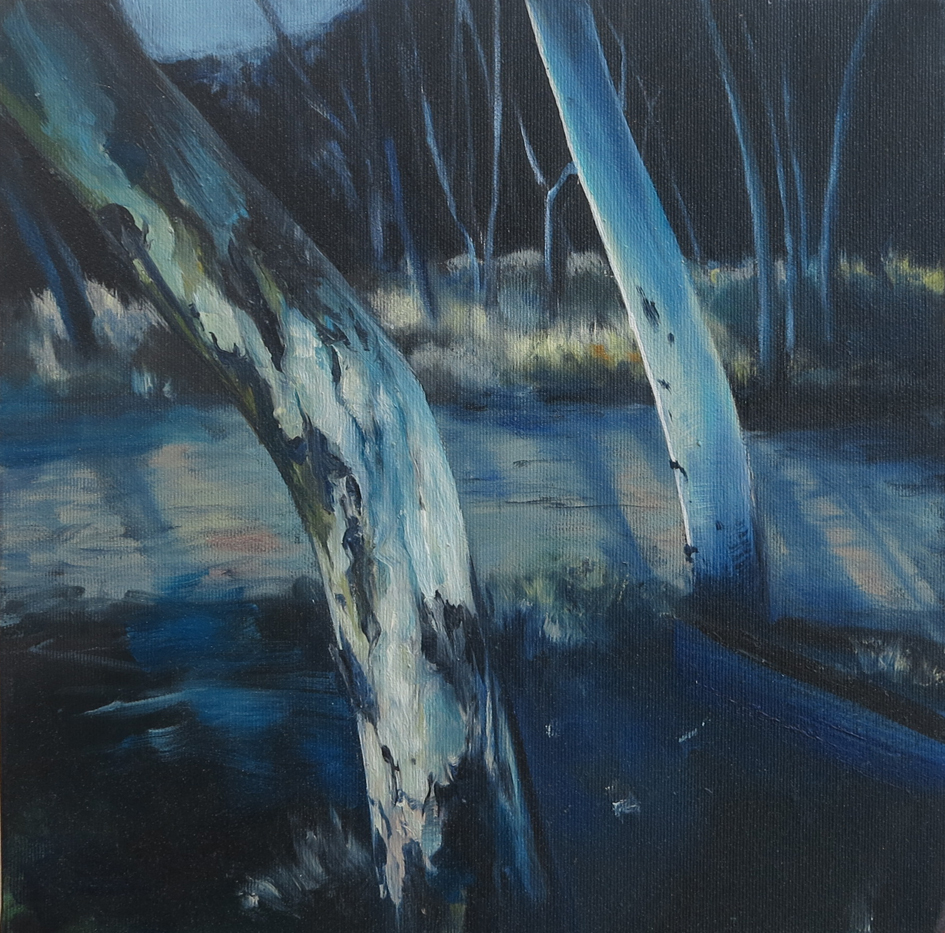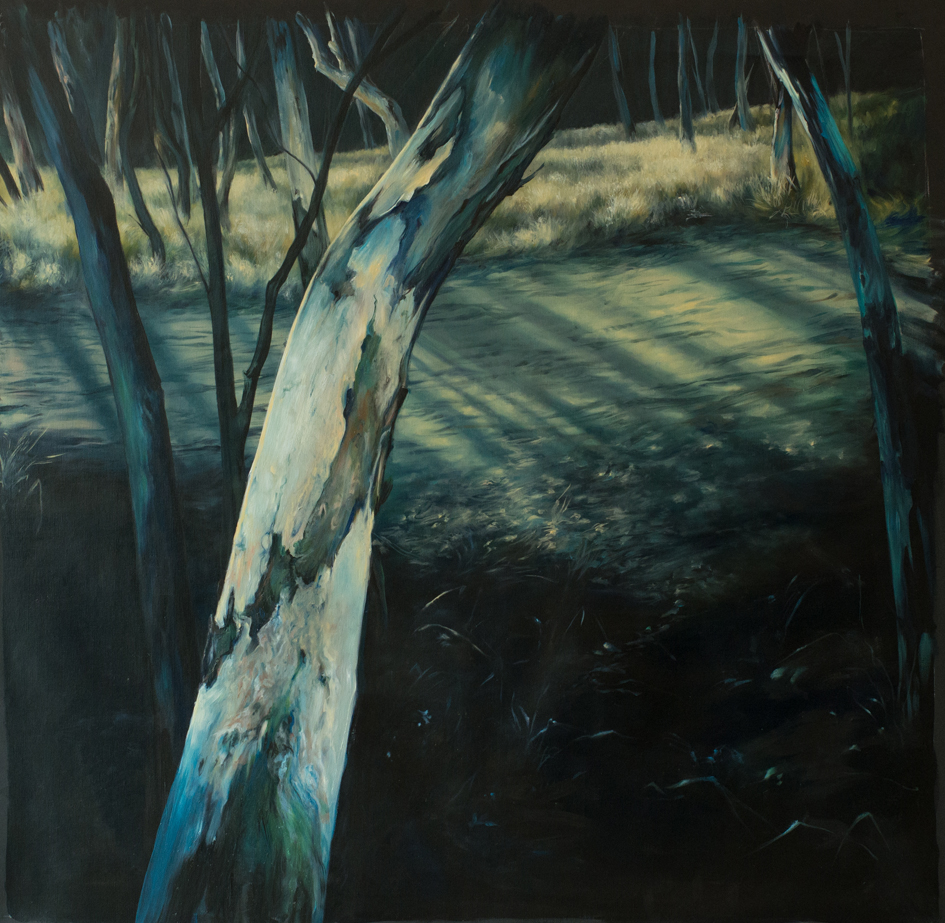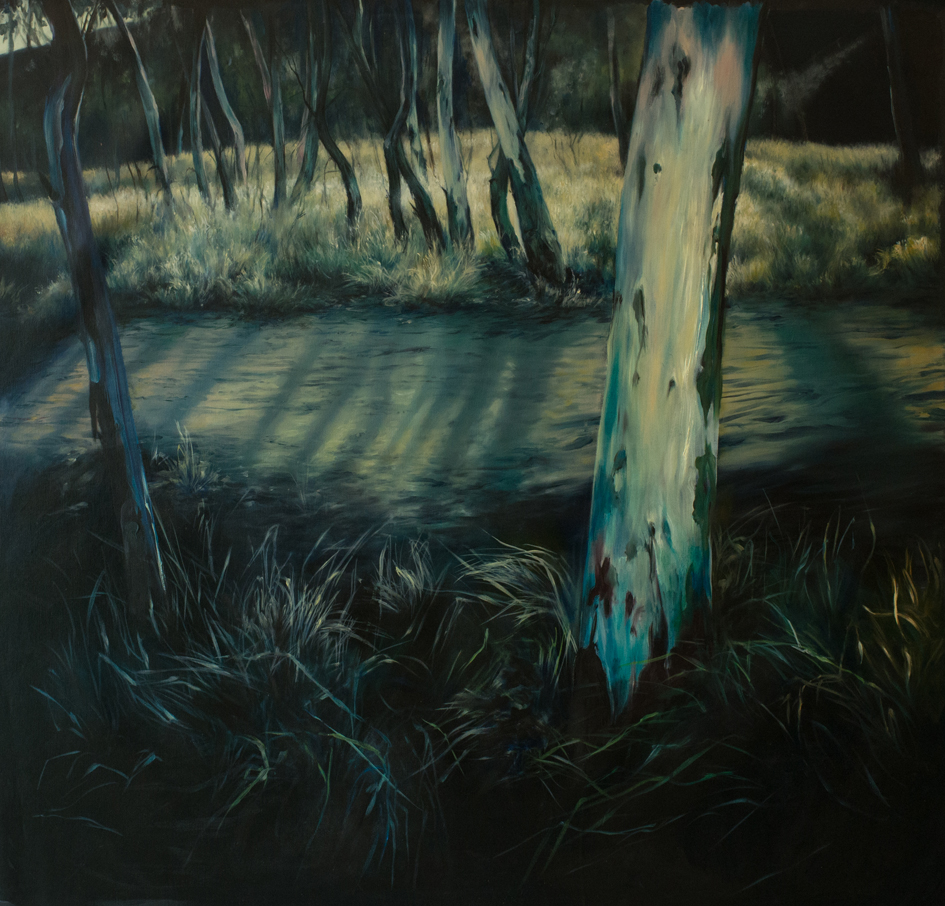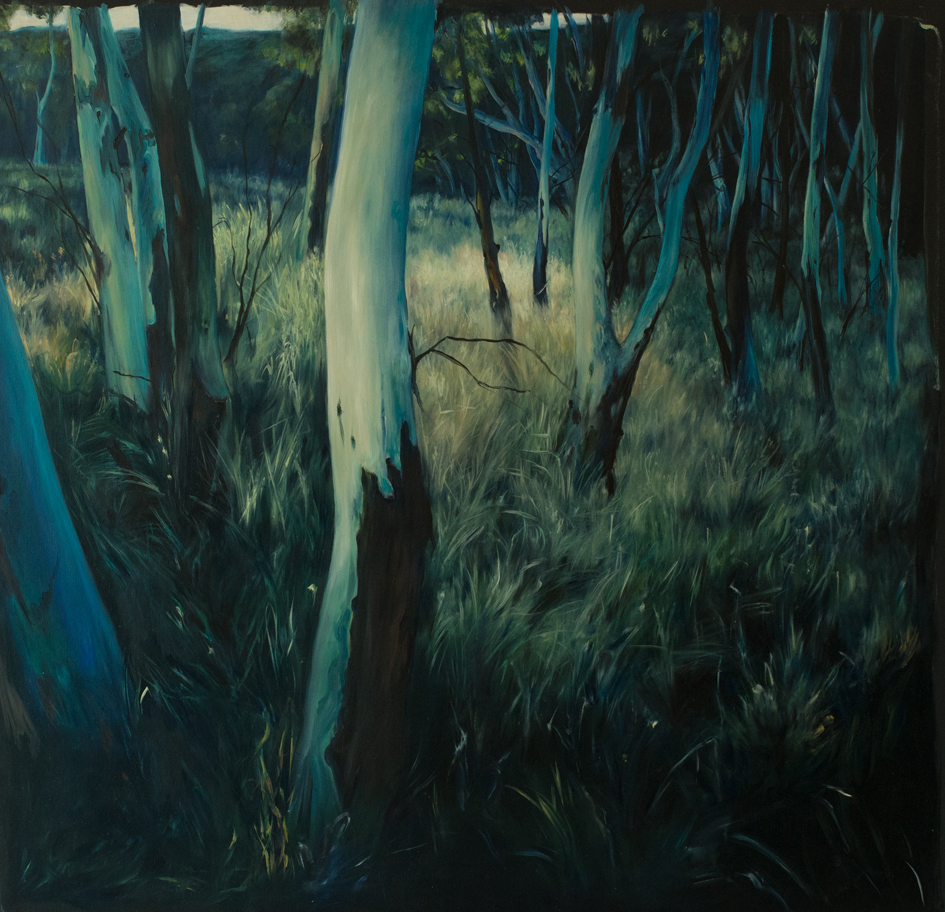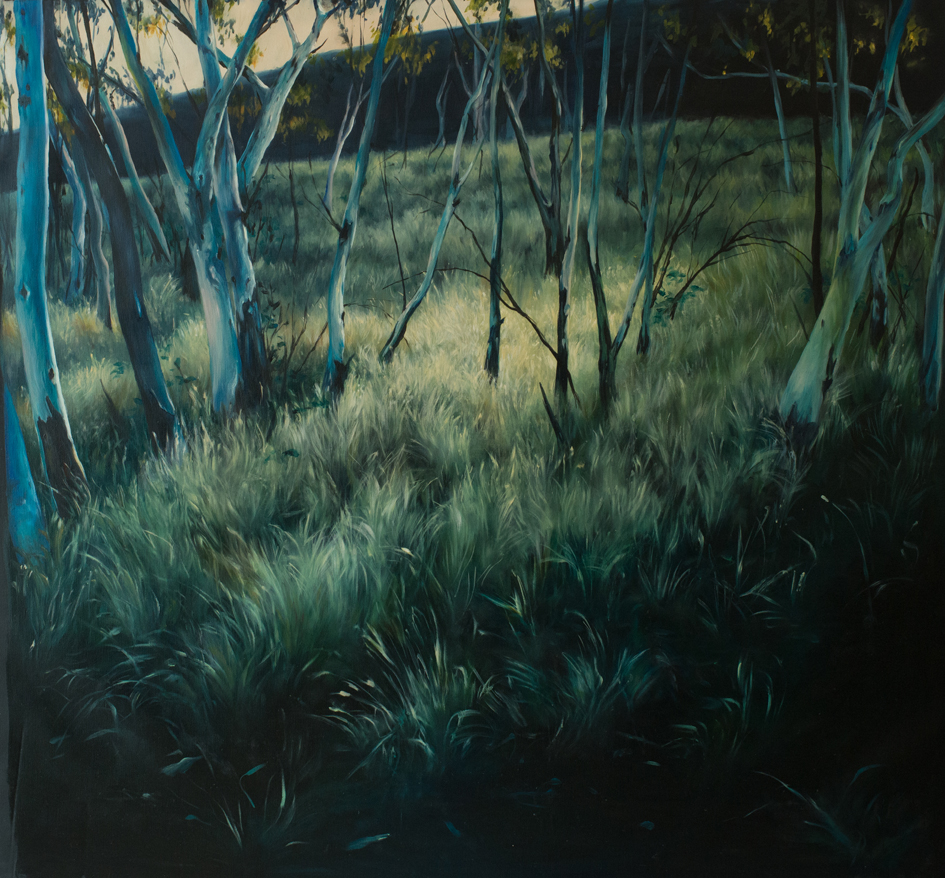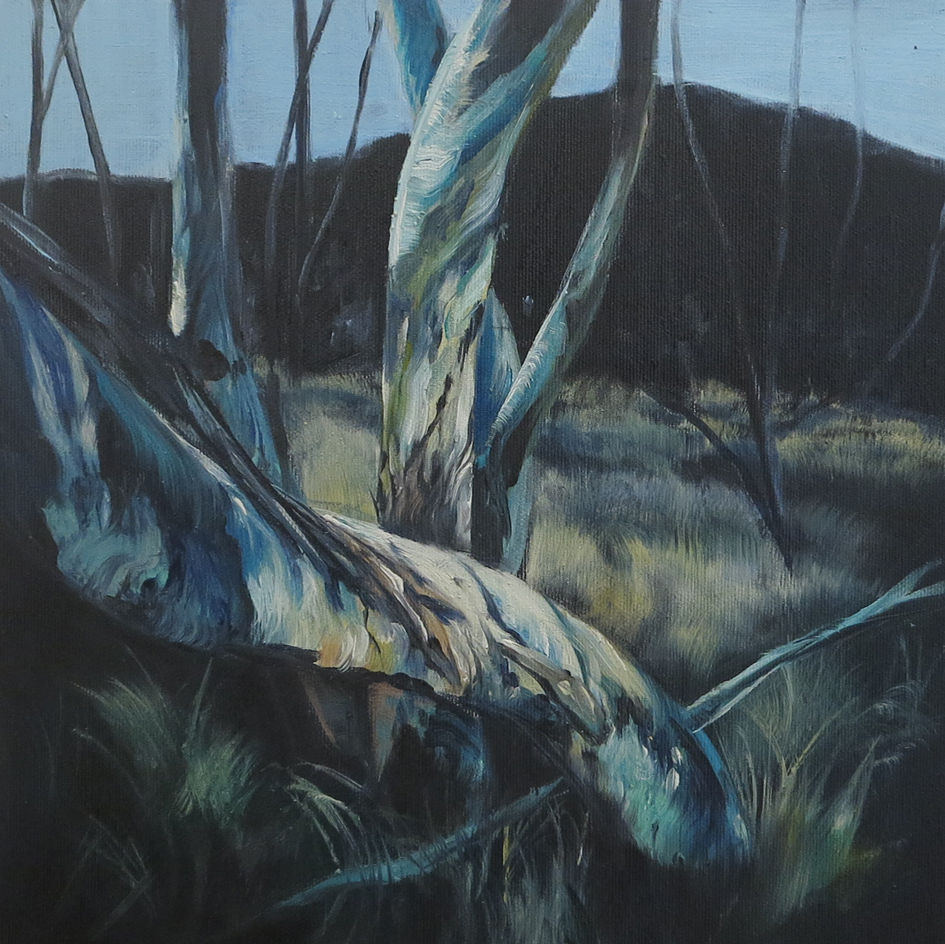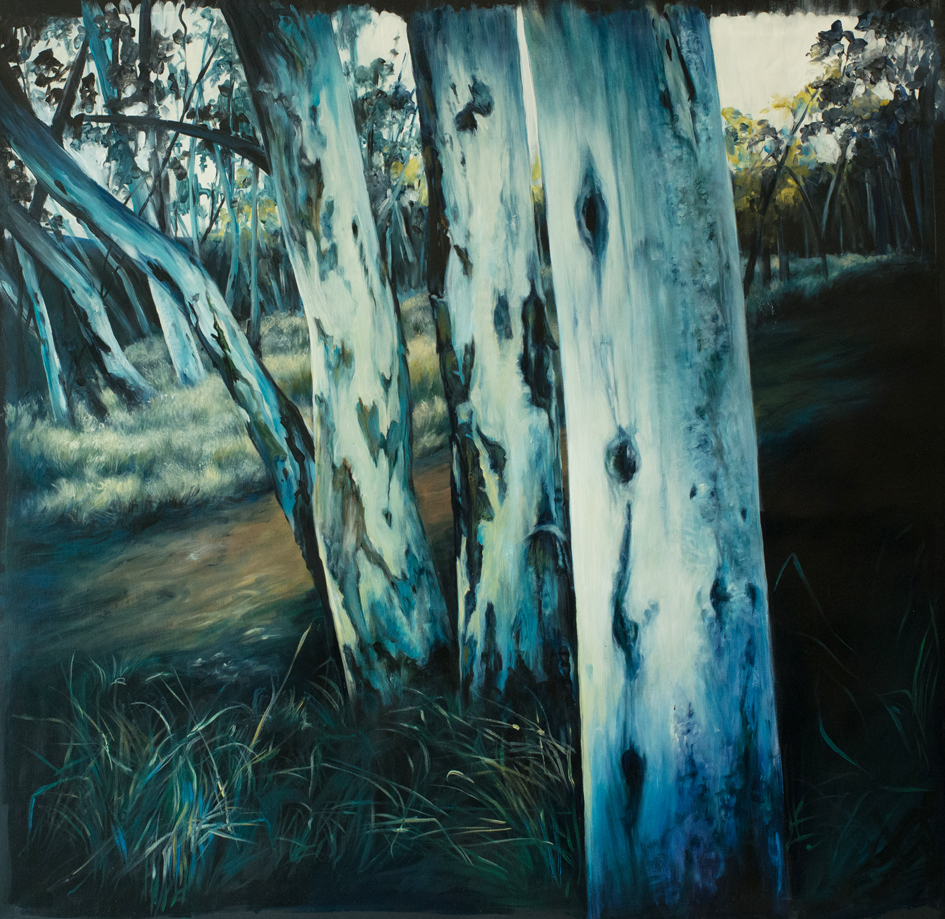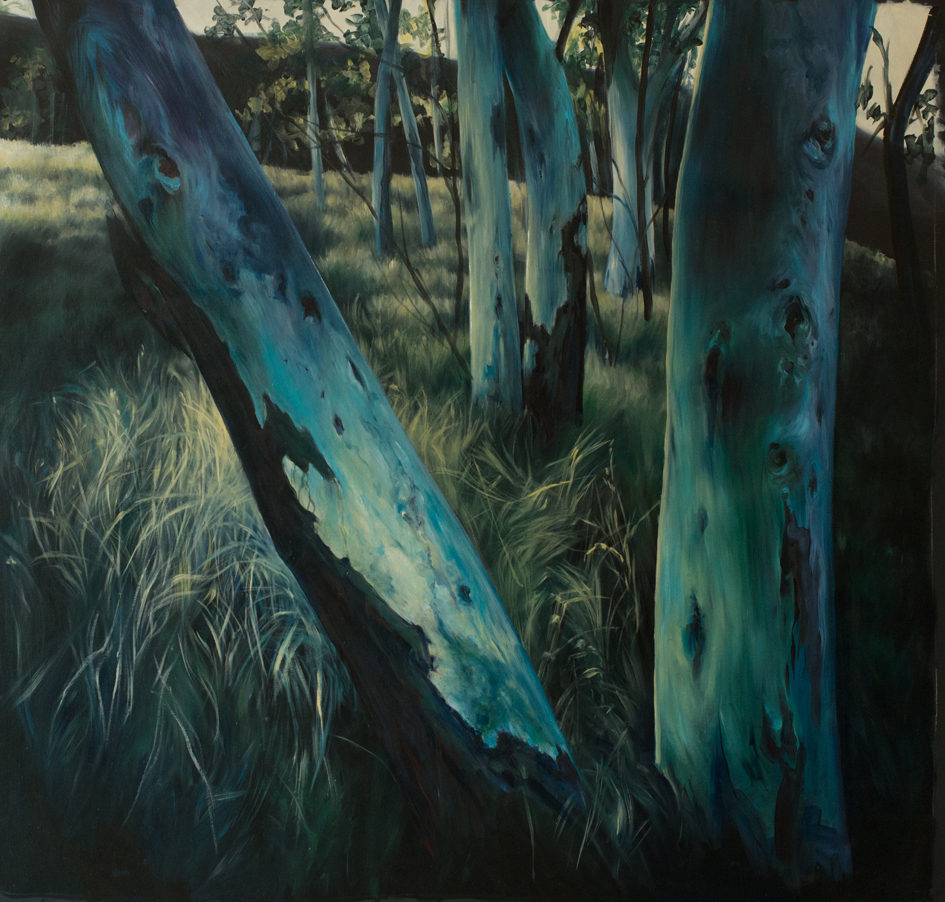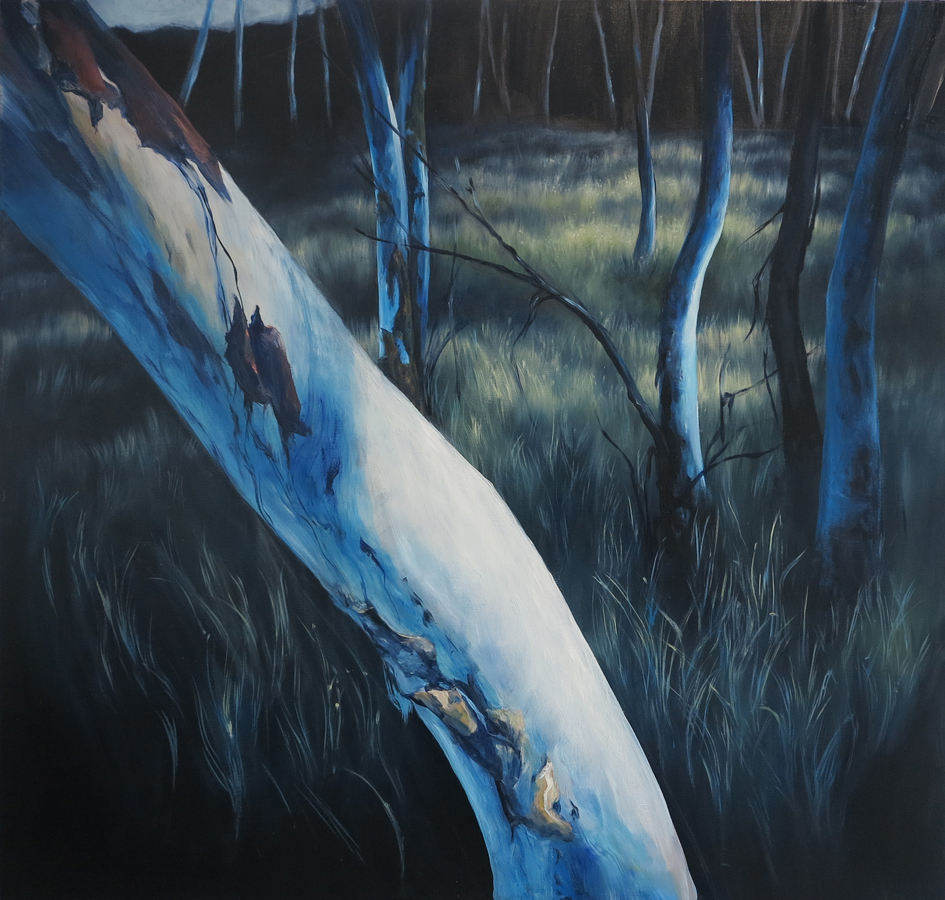Introduction -
Emma Stuart - The Blue Hour
Kick Gallery 4 Peel Street Collingwood
In a place of Albert Namatjira Gums, red sand and wide open spaces, Emma Stuart’s landscapes are unusual. Stuart has called this body of work The Blue Hour. Where others have come to the desert and been struck by its majestic ochres, sharp light and hard lines Stuart’s work is more subtle. She writes, “The Blue Hour is the time when we transition from night to day or day to night. The twilight and the dawn. And with it comes a shift in energy and consciousness.” It describes how place resonates with subjectivity and vice versa. What’s immediately striking is the blue palette that dominates her painting and a keen sense of claustrophobia from cropped compositions, which allude to Stuart’s process of working from photographs to recreate scenes she has visited, or more aptly, experienced. Trunks of gums crisscross the field of view and light floods in illuminating buffel grass from undisclosed, almost supernatural, sources. In one painting you are confronted with an uncomfortably close view of a fork in an ancient river gum. It draws you in to contemplative state and there is a heightened sense of intruding on someone’s personal space as limbs become fleshy and nuanced, intimately detailed.
Even Stuart’s seascapes seem to capture this closed-in quality where calm waves and flat horizons are weighted down heavily by tumultuous clouds and the air is thick with an ambient tension. Her landscapes take on a hyper-real quality where trees, waves and clouds become figurative and emotional in their expressions and there is the sense of a deep allegory at play in the imagery. They are emotional landscapes, where colour and light are augmented through the process of painting to suggest the mechanics of what it is to experience place and position one self in it – how we draw insight and spirituality from our environment and imbue it with meaning. As Stuart describes this experience of place, “the deep human history and current cultural complex are just as much a part of this energy as its physical landscape.”
Alexandra Hullah | April 2015
Coordinator | ‘Watch This Space Gallery and Artist Run Initiative’ | Alice Springs

